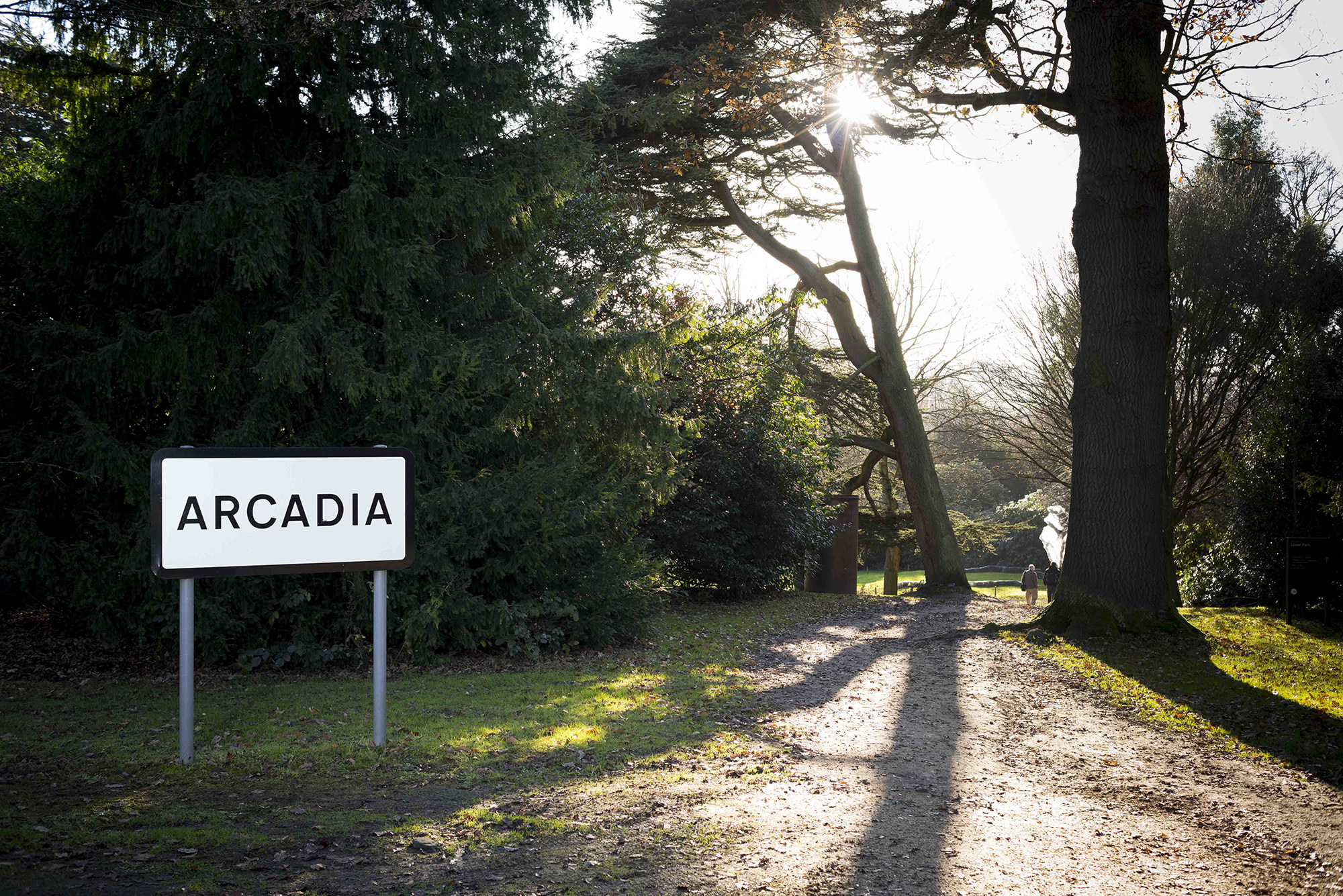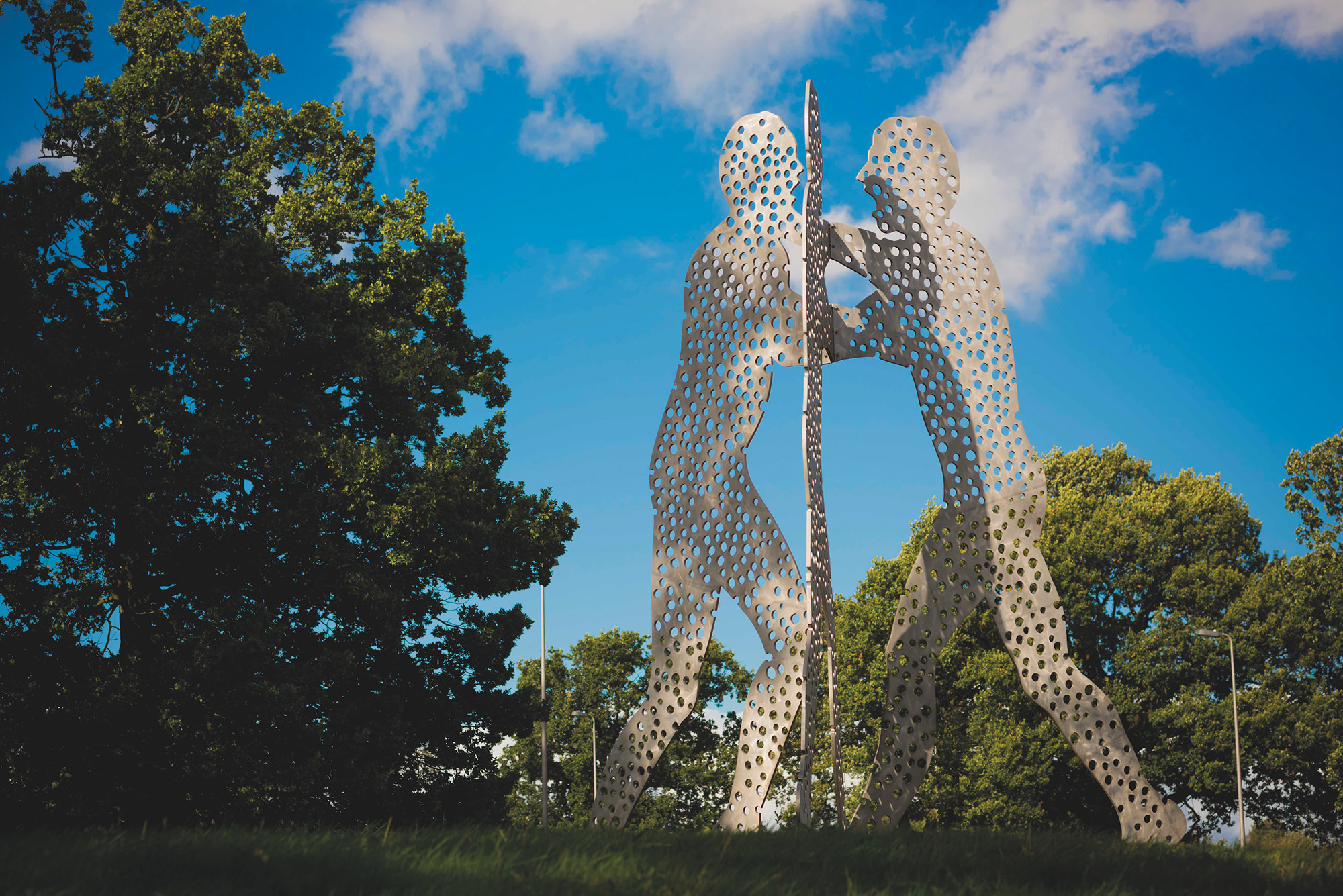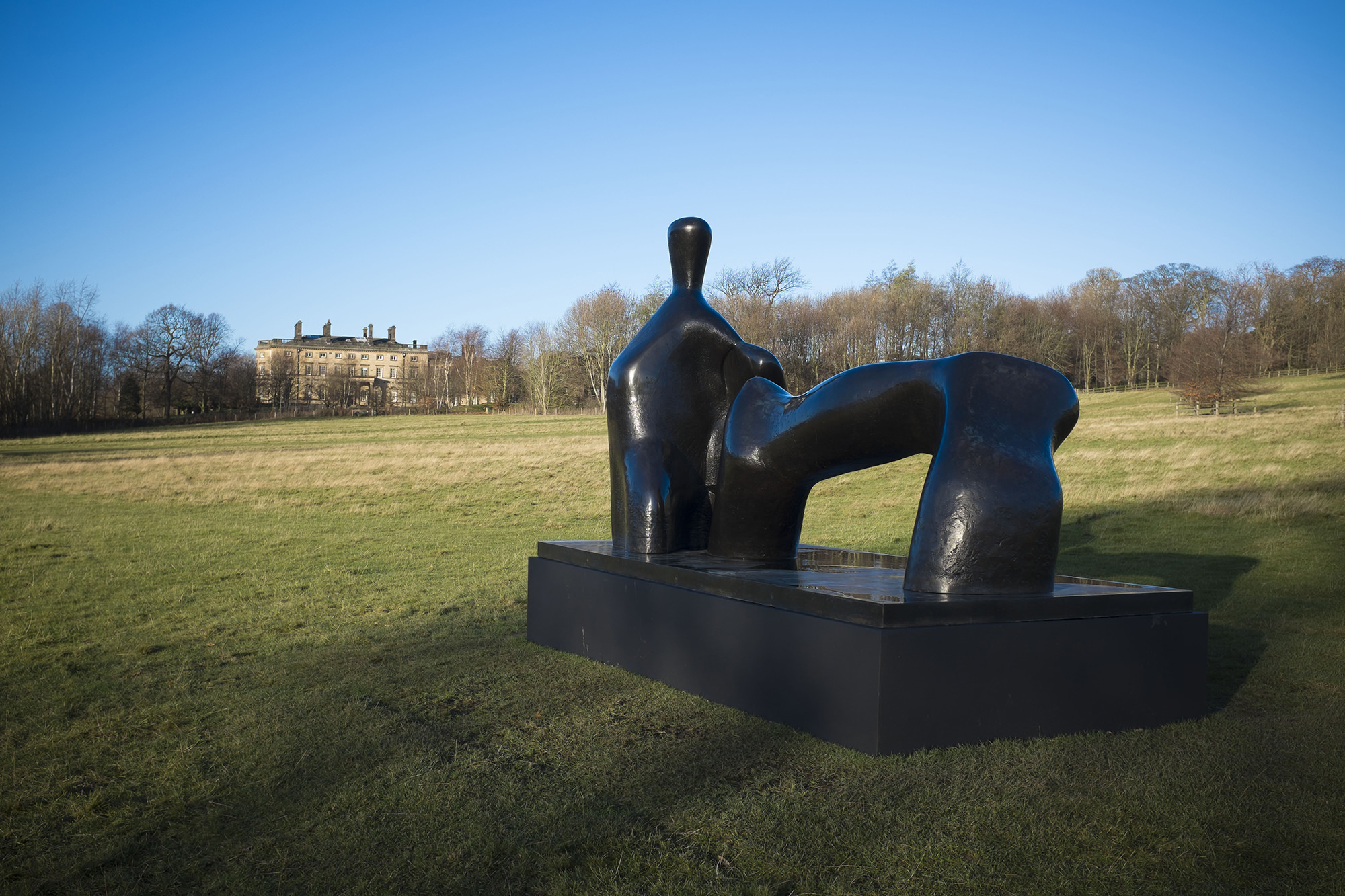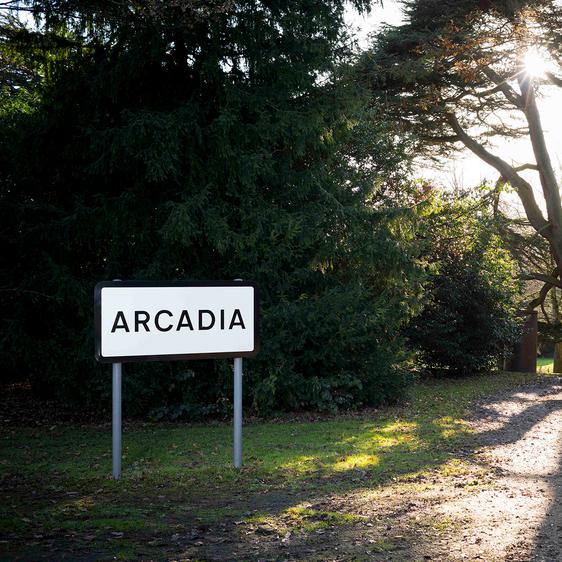
Henry Moore: Large Spindle Piece
Art Outdoors /Henry Moore: Large Spindle Piece
Henry Moore’s compulsive interest in landscape and its awe-inspiring formations began early in his life in Yorkshire and never left him. He was born into a mining community in Castleford, less than ten miles from YSP, and went on to become one of the world’s most celebrated artists.
When Moore visited the Park in 1979 as our first patron, he identified an area of land that he felt would provide a perfect location for his sculpture, in the estate’s former deer park. Although it was 15 years before we were able to make that wish a reality, YSP has had a display of Moore’s works there ever since, with its rolling hills and expansive vistas acting as the perfect foil for his sculpture. This changing display of sculpture ranges over 100 acres and represents an invaluable opportunity to see his work in the landscape. The undulating hills and views of the surrounding countryside offer settings to suit the character of individual sculptures, and enables visitors to explore and discover relationships between art and nature.
Large Spindle Piece was based on the shape of a piece of flint with protruding points that Moore found near his Perry Green home. It was also greatly inspired by Moore’s fascination with Michelangelo, which had begun almost 50 years earlier. A Royal Academy Scholarship had enabled Moore to travel to Italy in 1925 where he visited the Sistine Chapel. The dynamism created by the almost touching fingers of Adam and God in Michelangelo’s depiction of the Creation had inspired Moore to think about the tension between points and the energy this could convey. Large Spindle Piece also developed an earlier idea from the work Three Points made in 1939; he said: “Here again the points are used to give action: inwards in the case of the Three Points, but here to give action outwards”.
You might also like
- Art Outdoors
Katrina Palmer: The Coffin Jump
The Coffin Jump was created at YSP in 2018 as part of the 14-18 NOW arts programme for the First World War centenary. Katrina Palmer was awarded the commission to create an artwork and she took inspiration from the role of women during the war, and in particularly the all-female First Aid Nursing Yeomanry (FANY). - Art Outdoors

Leo Fitzmaurice: Arcadia
- Art Outdoors

Jonathan Borofsky: Molecule Man 1+1+1
- Art Outdoors

Henry Moore: Reclining Figure: Arch Leg
Moore’s recumbent figures reflect many different stages of abstraction, with Reclining Figure Arch Leg being highly abstract and comprising two highly simplified forms to suggest a body. Moore often thought of the human figure in terms of landscape, and the reclining position reflects the horizontal bands of earth, sea and sky. The torso and arched leg of this work could be seen as resembling a sea stack and arch as found around the coast of this country.





